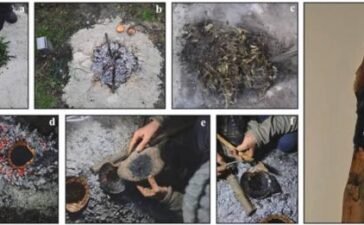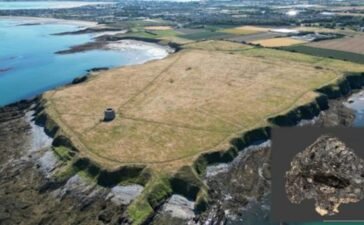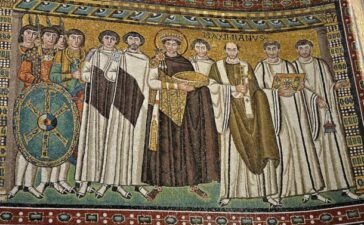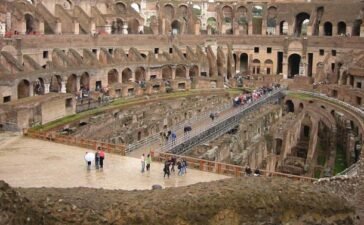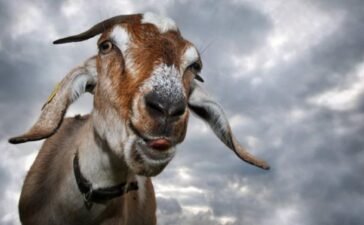Thanksgiving observances predate the feast of the year 1621 shared by the Wampanoag Indians and the Pilgrims of Plymouth Colony in Massachusetts. Several myths have developed around the holiday feast that we call Thanksgiving, including what was on the original menu.
European thanksgiving celebrations originally entailed a period of fasting, quiet reflection and prayer. They were separate from harvest celebrations that included feasting and rejoicing. Native Americans also have traditions of thanksgiving celebrations.
The 101 Pilgrims, including some children, who left England in 1620 for the east coast of the new Promised Land, as they called it, faced a difficult journey of 66 days on rough seas. They arrived in November, just in time for a harsh winter. They were weakened by their seagoing diet of hardtack biscuits, dried meat and beer. The copious salt in their diet enfeebled them, as did the seasickness many experienced in the stormy Atlantic Ocean crossing.
After a Difficult Year, a Feast to Celebrate the Harvest
The Pilgrims faced a very difficult year from 1620 to 1621, when only about 50 colonists, who survived the harsh first year, and 90 Wampanoag Indians shared a harvest feast.
The soil along the seacoast was not good for farming, but a leader of the Wampanoag, named Squanto or Tisquantam, had helped the Pilgrims grow corn with fish as fertilizer. He also told them where to fish. The Wampanoag and the Pilgrims formed a defensive alliance in March 1621 to protect them from attacks by other tribes.
Before the feast, the Wampanoag had heard gunfire, and their chief, Massasoit or Ousamequin, assuming his English allies were under attack, sent 90 braves to investigate. The natives soon realized the Pilgrims were just hunting for deer, intending to put on a harvest celebration.
Some of the Wampanoag men joined in the hunt for deer to supply the celebration, which lasted for three days. English Puritans, including men, women and children, joined with the native people and ate shellfish, eels, corn and venison (deer meat), and possibly wild turkeys. They celebrated by singing, dancing and playing ball games.

An idealized depiction of the first Thanksgiving feast. (Public Domain)
In 1623, the Pilgrims had their first Thanksgiving feast day. It was probable that they prayed at the first day of giving thanks in 1621, but in 1623 they made the day a holy day, which they went on to celebrate sporadically. On Thanksgiving Day in 1623, the colonists thanked God, believing he had sent the rain that ended a drought of two months.
From Barbarity to the Modern Thanksgiving Feast
There were long periods when the colonists did not celebrate ‘thanksgiving’, though they continued to observe some more somber thanksgivings, sometimes in both spring and fall.
In 1637 and 1676, they celebrated murderous slaughters of Native Americans. In 1676, the colonists observed a “thanksgiving” victory by mounting the head of the son of Ousamequin (Massasoit) on a pike. The head stayed there in Plymouth for over 20 years, while his unburied body rotted nearby.
In 1841, preacher Alexander Young published a letter conflating the 1621 feast and rejoicing with the harvest celebrations of fall. In a footnote he called the holiday Thanksgiving. It stuck.

Traditional Thanksgiving feast. (Ms Jones from California, USA/CC BY 2.0)
In 1846, magazine editor Sarah Josepha Hale promoted a day of remembrance. In the years following, the day became a feast and mythical remembrance of the 1621 harvest celebration between the English Puritans and natives. In 1863, Abraham Lincoln set the last Thursday in November as a national holiday that developed into today’s feast of turkey, mashed potatoes, stuffing and pies. Gone from most Thanksgiving tables of today are the venison, eels and shellfish. People gather with relatives to gorge on food and liquor and watch parades and football on television.
The celebration has become controversial, as many Americans are only recently learning that Native Americans remember the 1621 day as the beginning of what became a tragic intersection of their two peoples. The natives had encountered Europeans before, and great tragedy followed. An article about the evolution of Thanksgiving in The New Yorker states:
“Why would Ousamequin decide to welcome the newcomers and, in 1621, make a mutual-defense pact with them? During the preceding years, an epidemic had struck Massachusetts Bay Indians, killing between seventy-five and ninety per cent of the Wampanoag and the Massachusetts people. A rich landscape of fields and gardens, tended hunting forests, and fishing weirs was largely emptied of people. Belief systems crashed. Even survival did not mean good health, and, with fields unplanted and animals uncaught, starvation followed closely behind. The Pilgrims’ settlement took place in a graveyard.”
Native Americans Too Have a Tradition of Giving Thanks
Thanksgiving also has a long history among the Native Americans. Various nations celebrate giving thanks in a variety of ways. For the Haudenosaunee or Six Nations Iroquois Confederacy’s traditional Thanksgiving address see this PDF. It says in part:
“The People
“Today we have gathered and we see that the cycles of life continue. We have been given the duty to live in balance and harmony with each other and all living things. So now, we bring our minds together as one as we give greetings and thanks to each other as people. Now our minds are one.
“The Creator
“Now we turn our thoughts to the Creator, or Great Spirit, and send greetings and thanks for all the gifts of Creation. Everything we need to live a good life is here on Mother Earth. For all the love that is still around us, we gather our minds together as one and send our choicest words of greetings and thanks to the Creator. Now our minds are one.”
For the present-day people of the Wampanoag tribe, Thanksgiving on the last Thursday in November is a day of mourning.
Top image: Statue of Wampanoag Massasoit Ousamequin in Plymouth, where members of the Wampanoag tribe gather on Thanksgiving Day. Source: Gkullberg/CC BY-SA 3.0
By Mark Miller


